Winter 2018/2019 - En el Camino a Mexico y En Casa en Puerto Vallarta
![]()
During the second half of the summer, the Nomads took a health care break from Nomad Life, spending four and a half months in Albuquerque and Scottsdale. While life in the US is simple and familiar, we found ourselves more than ready to be 'on the road again'.
As we wrote last January, Puerto Vallarta had charmed us into taking action in a totally new way - we planned way ahead! We made a commitment to return to Puerto Vallarta in December to the very same cozy and comfy apartment where we lived last winter! As November's chilly winds hit Albuquerque, we moved up our plans to escape.
As if made for us, the Mexican airline Volaris inaugurated a direct flight from Albuquerque's Sunport to Guadalajara, so we made reservations and flew south on November 17. After just two days in this great city, we boarded a very comfy bus to head east across the Baijo, Mexico's lowland river valley, past fields of sorghum, wheat and maize interrupted by volcanic ridges rich in greenery and cacti, through the city of Leon, and into the city of Guanajuato. What a ride!
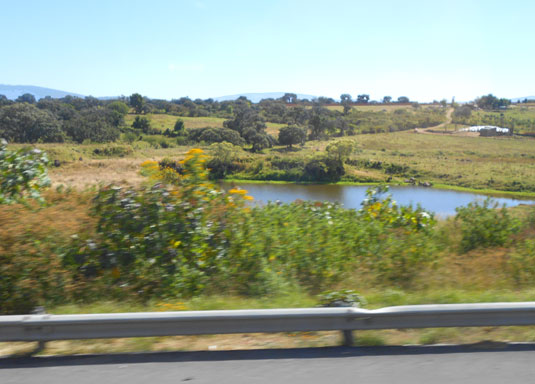
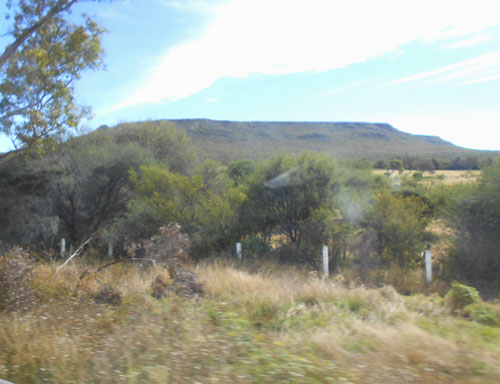
Guanajuato
The taxi ride from the bus station to our hotel provided instant immersion into the geography and topography of the city of Guanajuato. From the station, we rode along a broad road that before long entered the first tunnel. Before, long we entered another tunnel, and at the end descended a steep hill to arrive in front of the Hotel Carcamanes 17, our home for the next nine nights.
After a warm welcome at the hotel, we dropped our wheely bags in our room and went to the window. The view provided a quick introduction to the city's topography since we looked out across rooftops to the hillside opposite where the funicular climbed the steep slope to a giant statue of El Pipila, the city's great hero. More about him later!

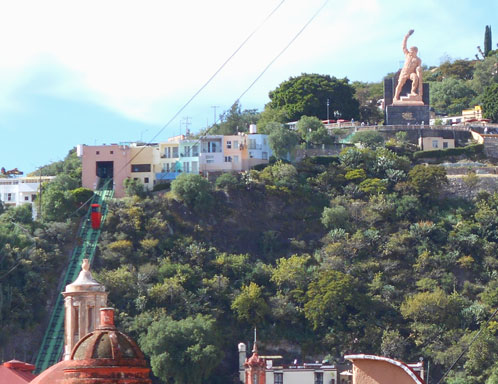
We then headed out to explore. The Jardin Union, the city's heart, was crowded with people enjoying the evening so we joined them and settled on the patio of the Hotel Santa Fe for a really yummy meal with good wine and gracious service. It was quickly becoming clear that it would be easy to enjoy ourselves here!
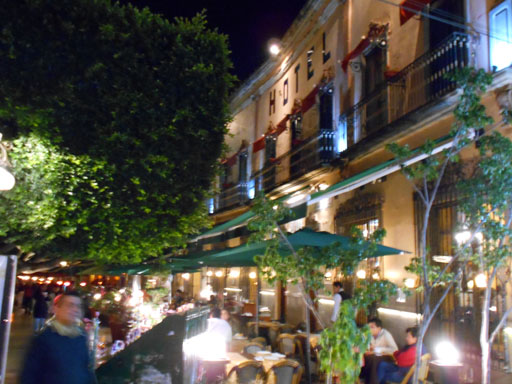
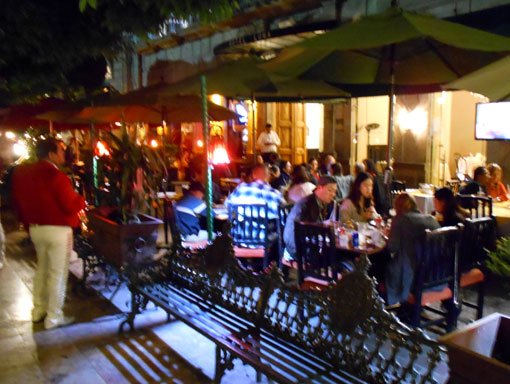
During our stay, we feasted each morning on a special desayuno prepared by Mauricio or Rodrigo, our hosts. We also met other guests who quickly became new amigos. Each day, we ventured forth to explore the narrow calles and admire the rich architecture.
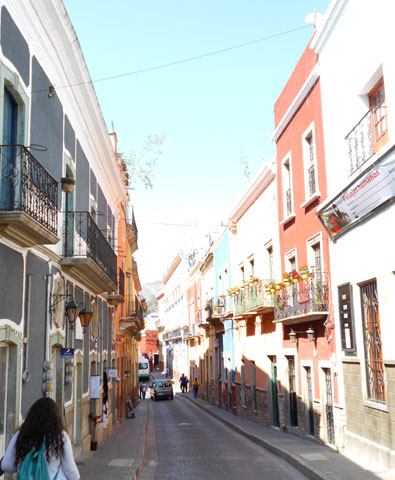
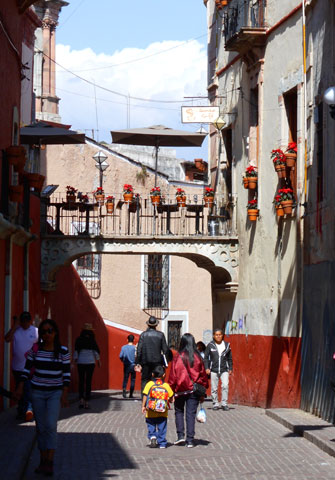
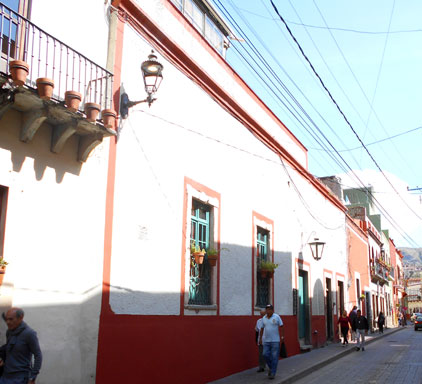
To provide a bit of enlightenment about Guanajuato's very unique geography and topography, the city sits in the bottom of a ravine with steep sides rising on either side. Stretching along the bottom of this ravine is the largely pedestrain Centro, that serves as the center of city life, as well the location of the rich architectural wealth of the city .
The Basilica de Nuestra Senora de Guanajuato on Plaza La Paz is the most dramatic and impressive building in the city.
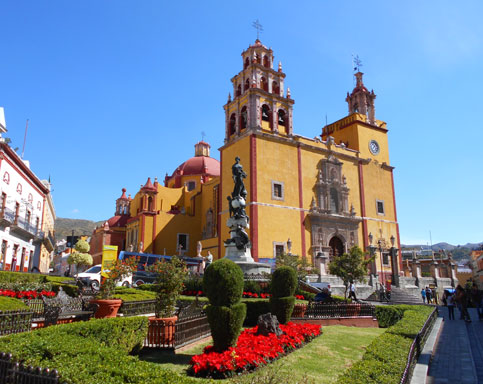
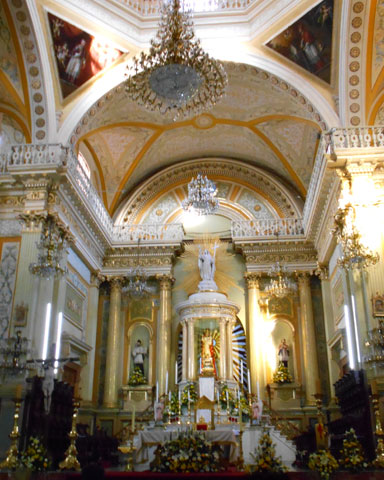
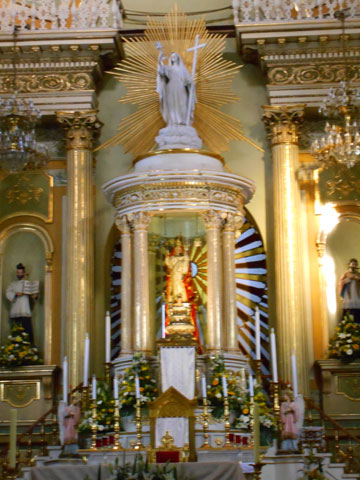
Adjacent to the Jardin de Union, the Teatro Juarez with its rooftop sculptures and classical facade is another special example of the architectural zest that has graced this city.
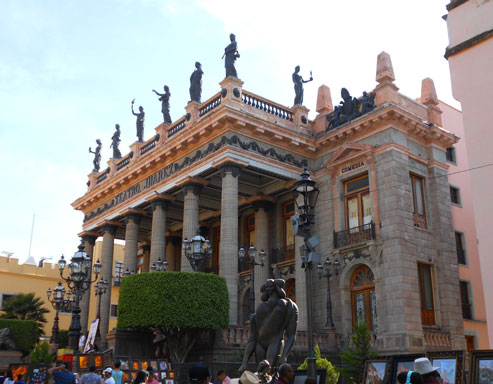
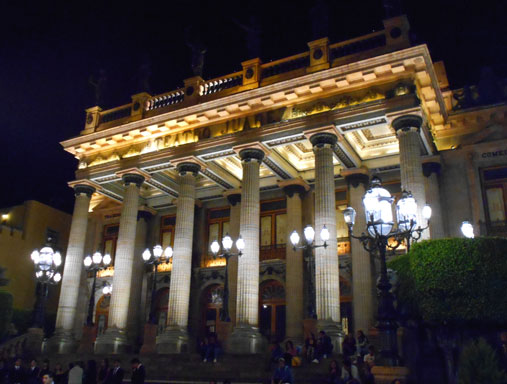
In a visit to the interior we viewed elegence equal to any in the world.
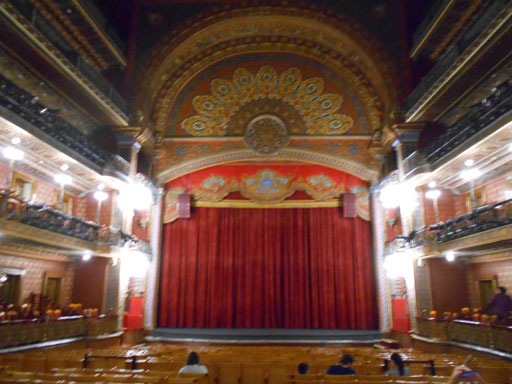
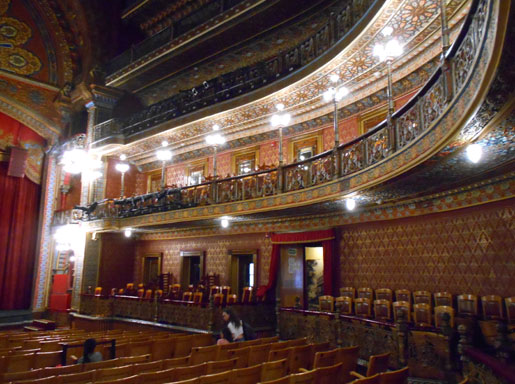
Other iglesias and squares throughout the Centro offer more visual delight,
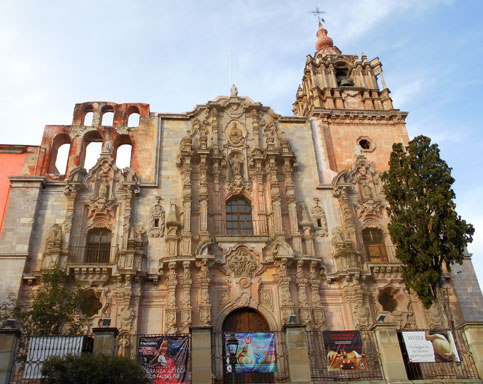
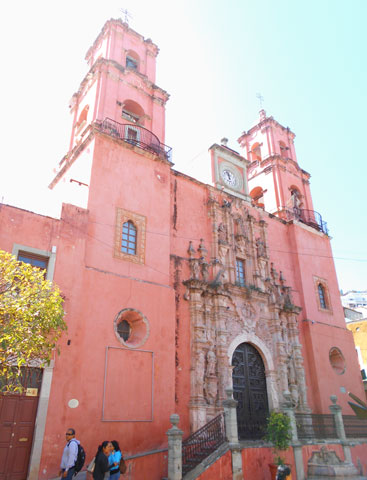
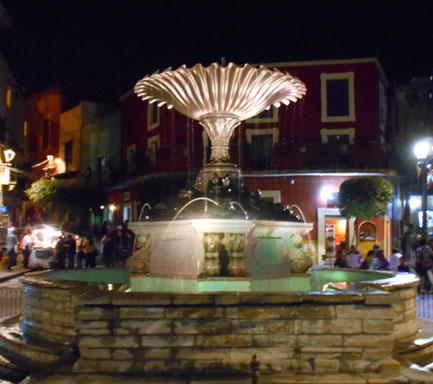
. . . along with many stately colonial mansions of the wealthy mine owners.
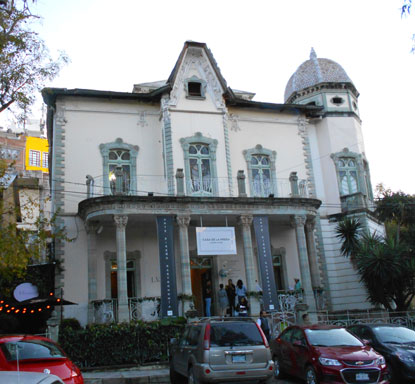
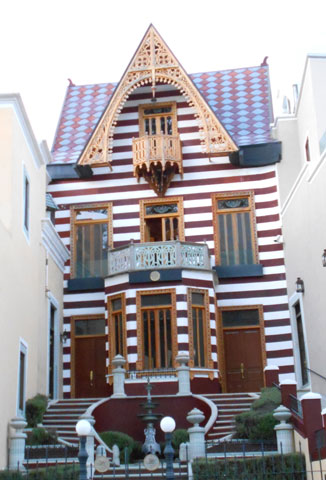
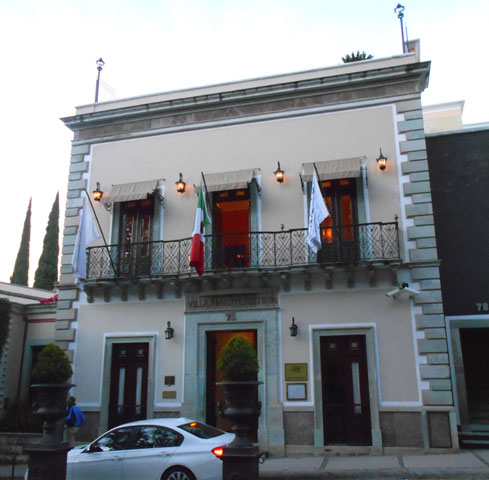
The great Mexican artist, Diego Rivera was born here and his casa is now a museum and art gallery featuring many of Rivera's works and special exhibitions of other artists. Our appreciation for Rivera's diverse and rich talents has been dramatically expanded!
Did some of this talent rub off on Susan - we'll see!
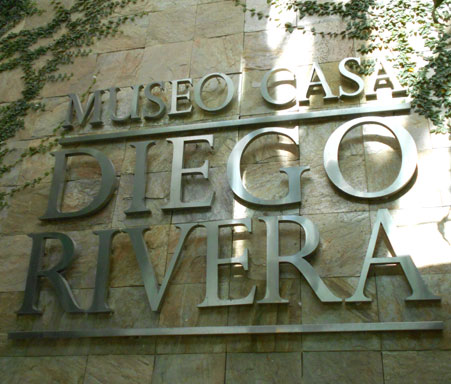
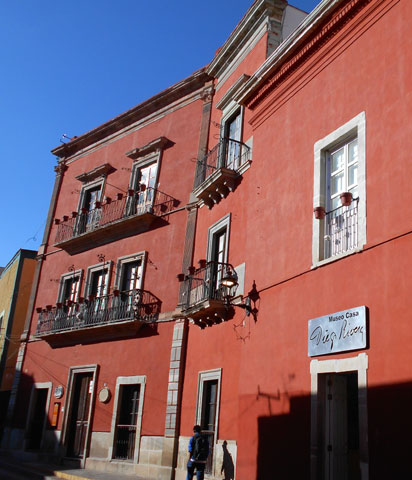
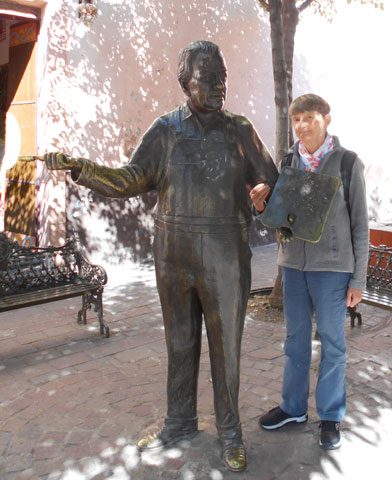
Rising from the fairly flat Centro, the houses as well as shops cling to the steep hillsides, seemingly precariously, and are reached via narrow lanes or stairways.
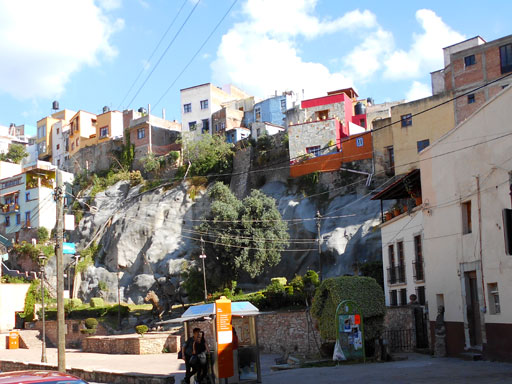
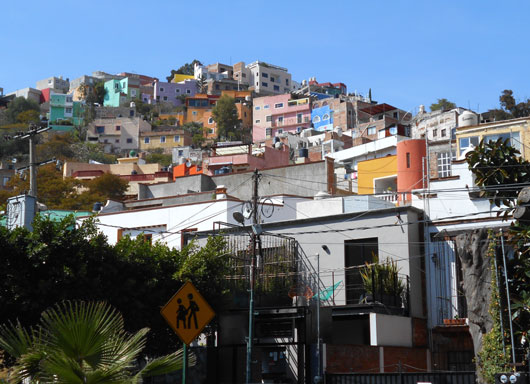
The before mentioned funicular offers easy access to an overlook point high on the hillside, with a glorious view of the 'El Pipila' statue, .....
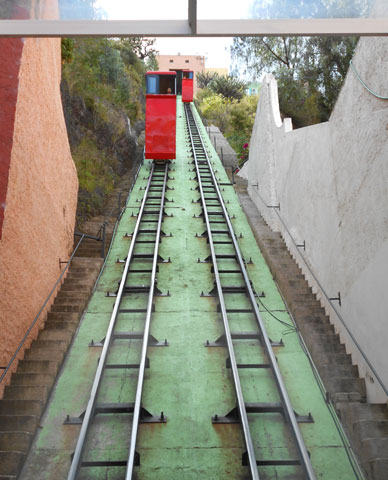
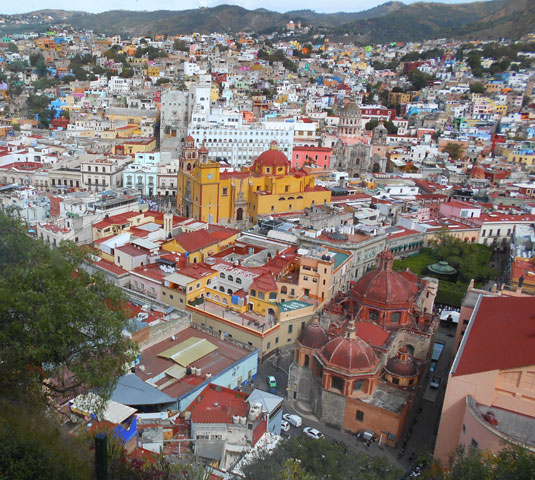
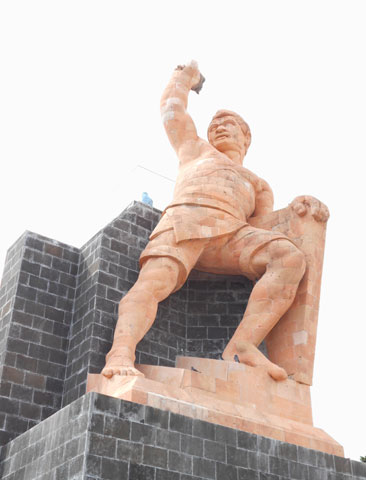
. . . as well as great views of the city and the surrounding hillsides.
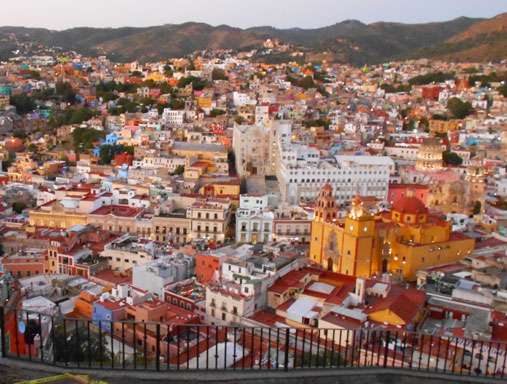
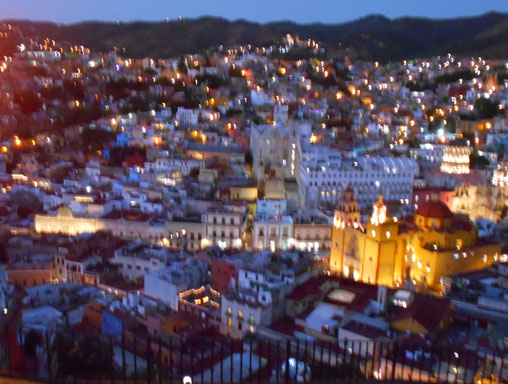
Running below ground, we discovered there is a maze of roadway tunnels that offer access to the Centro for cars, trucks and buses. After a couple of days of exploring, we found that we needed to use the stairways to descend into these tunnels to find walkways to the bus stops for trips further from the Centro - very exciting.
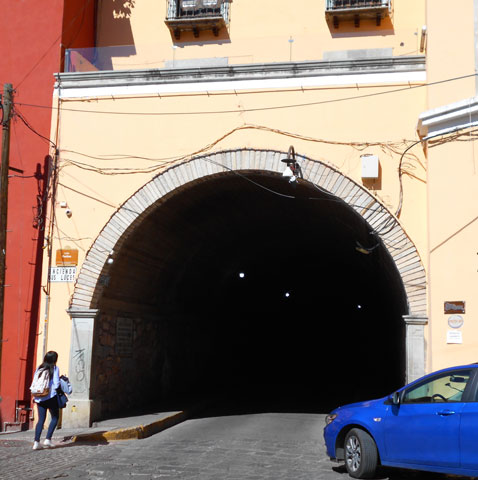
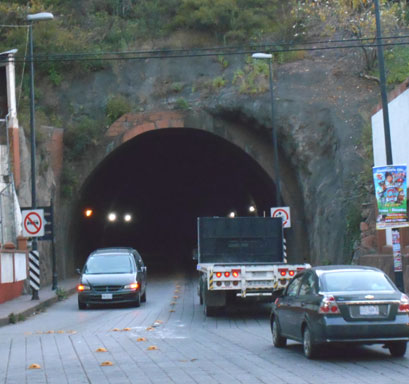
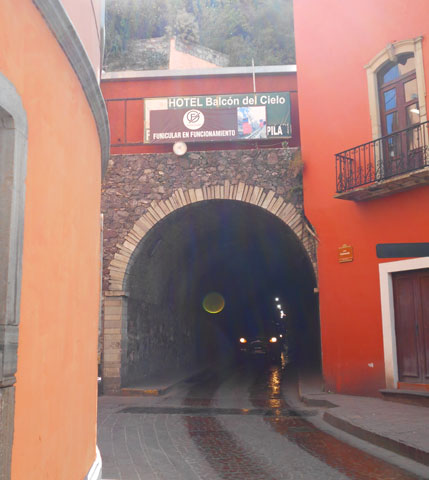
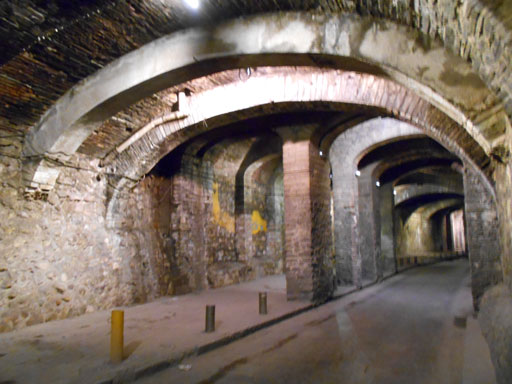
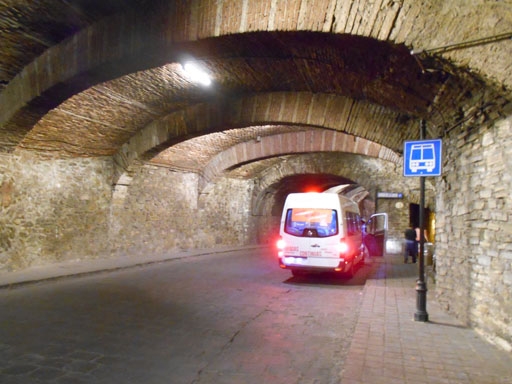
After a few days of exploring the city, we traveled out of the centro to the Museo Ex-Hacienda de San Gabriel de Barrera, once the colonial home of the wealthy Barrera family. Here we enjoyed strolling through seventeen carefully kept gardens in an eclectic selection of styles, a perfect place for tranquil contemplation while admiring the amazing plants and sculptures. The hacienda itself offers a peek into daily life of the silver barons, with fine furniture and paintings, bedrooms and salons, and an amazing family chapel. This view of the wealth and luxury of these folks was truly extraordinary!
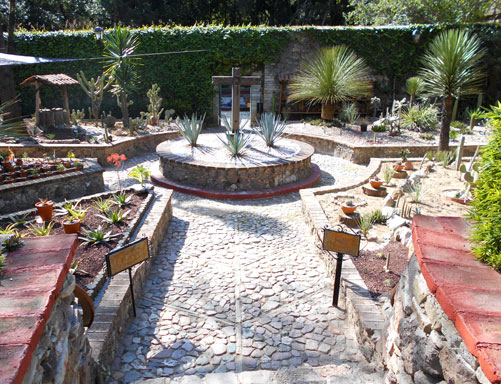
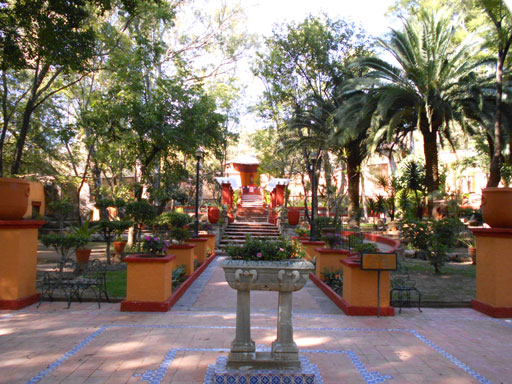
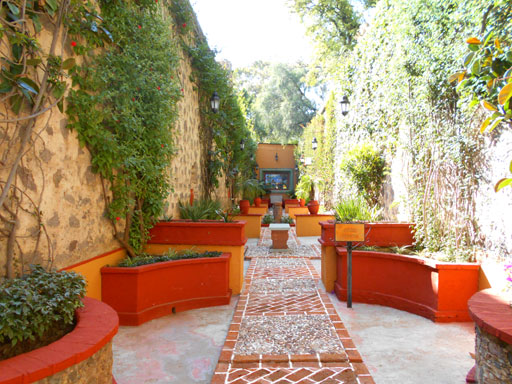
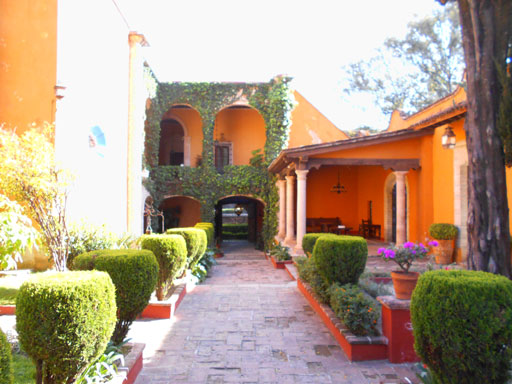
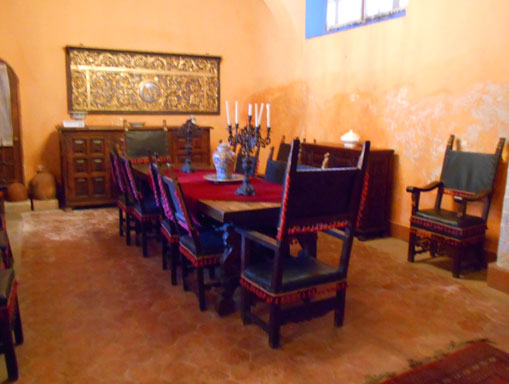
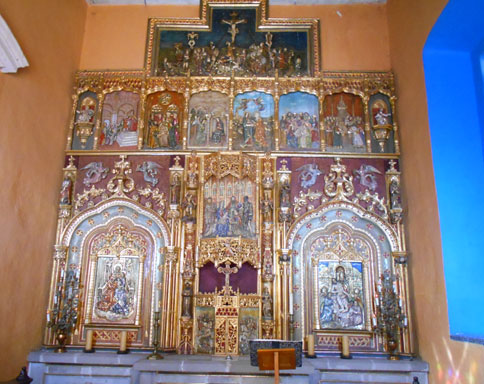
As we came to the end of our stay in this fascinating city, we began to wonder if we would return to Guanajuato for a longer stay, and if so where would we choose to stay. We decided that an apartment near one of the plazas with big shady trees and cafes nestled underneath would be highly preferred, but we would also want our casa to be near the Mercado Hidalgo, a grand 1910 era iron structure, currently a huge market where dozens of vendors offer a broad range of frutas, verduras, carnes, pollos, mariscos, and other food, plus plenty of other stuff. Food shopping would be easy here!
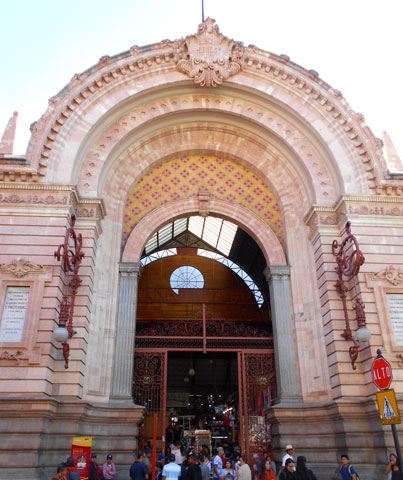
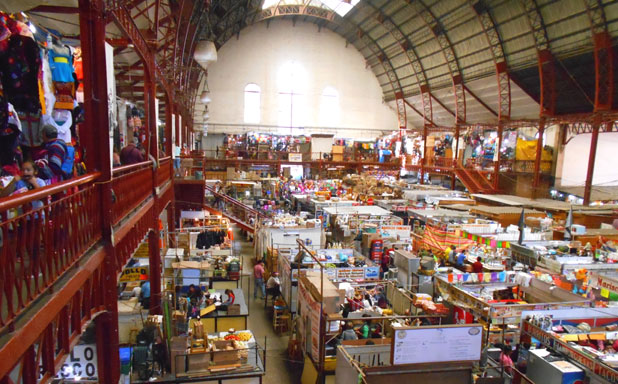
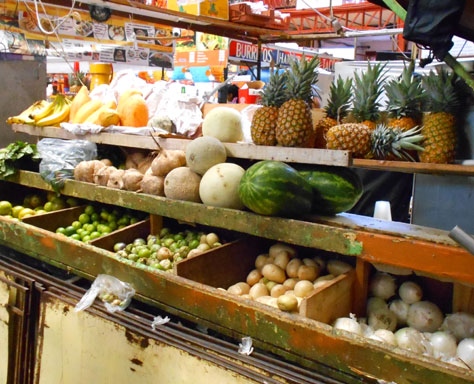
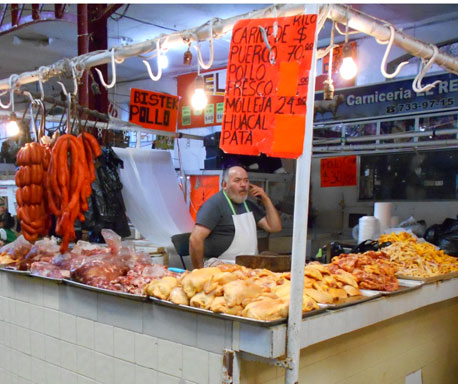
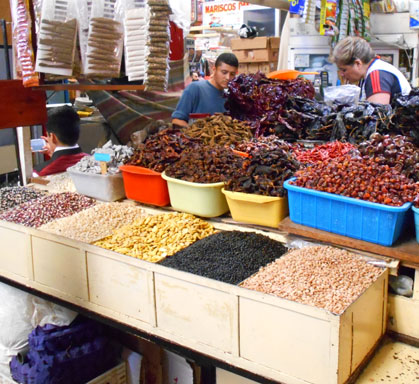
Will we return? Only time will tell, but it's nice to know we've found a place we would like.
Guanajuato's history is long and eventful. Before and during the Spanish Viceroyalty, Guanajuato grew wealthy due to the incredible mineral wealth, especially silver, in the surrounding mountains. This wealth enabled the citizens to live in luxury and to develop a vital agricultural and commercial economy. Art and culture thrived.
Meanwhile, in Europe, Napoleon's invasion and occupation of Spain from 1808 to 1813 weakened the Spanish viceroyalty and raised the revolutionary fervor in Mexico, especially in the region surrounding Guanajuato. Father Miguel Hidalgo y Costilla and other leaders urged the Mexicans to take up pitchforks and stones and march to Guanajuato where the royal troops were sheltering in the Alhondiga de Granaditas, then the public granary.
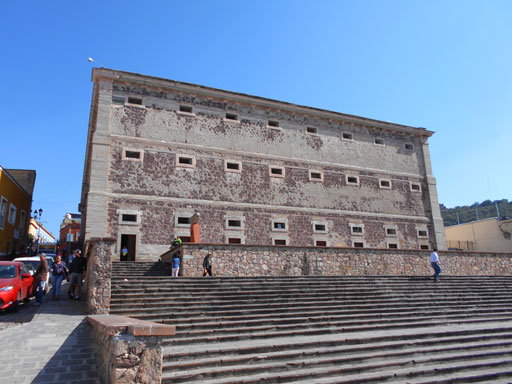
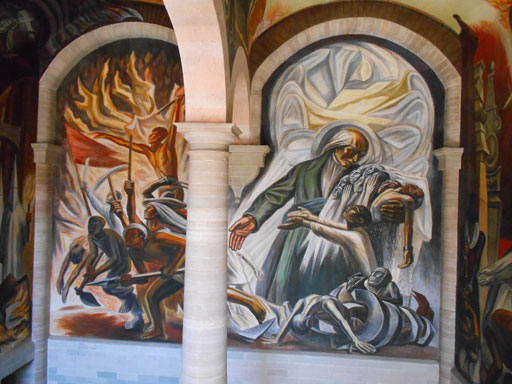
A dramatic action by Juan Jose Martinez "El Pipila" burned down the wooden front door enabling the rebels to storm in and win the day. This was the first action of the war for Mexican Independence that went on from 28-September-1810 until 27-September-1821, eleven long years! Today, the Alhondiga is the Regional Museum where the explanations of the history of the war for Independence are clear and well designed but only in Espanol.
This is not the end of our story on this fascinating, intriguing, architecturally rich, historic city of Guanajuato, but for now we must leave our readers and travel by bus on to Guadalajara and on to Puerto Vallarta where we have perched in our comfy casa. Check back!
Click here to go to our Home Page
Click here to go to Our Searching the World page
![]()